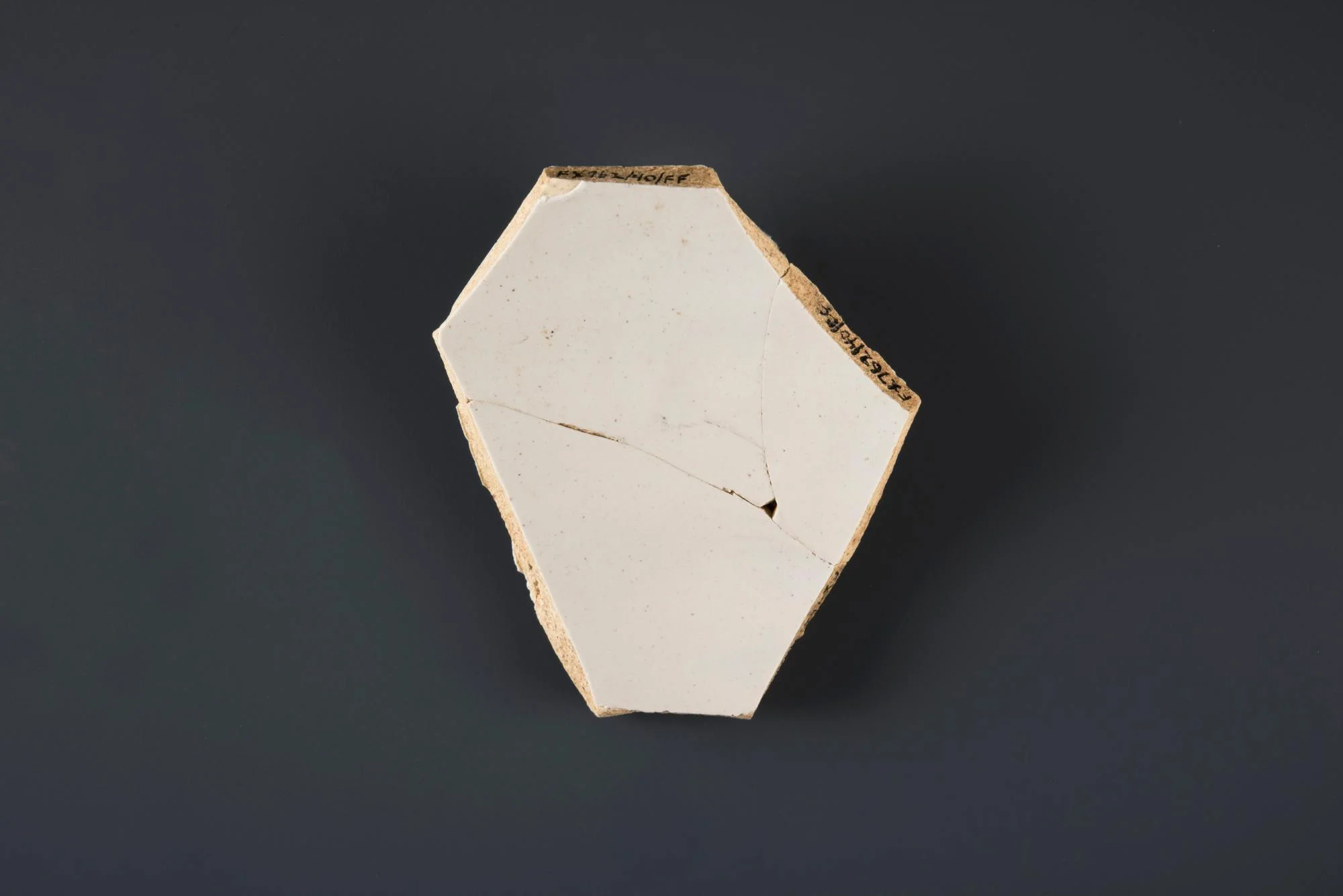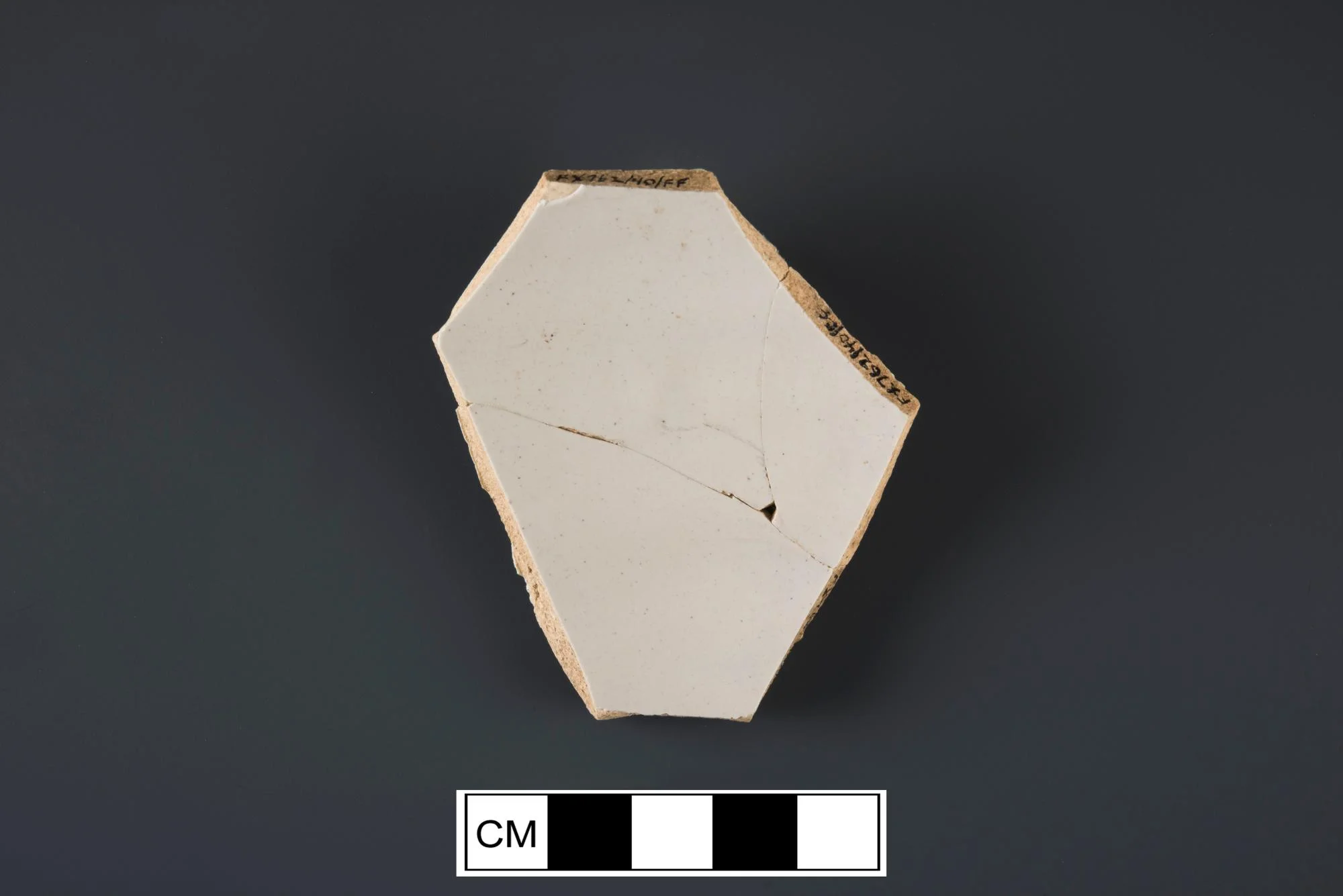Notes
This is a fragment of an undecorated tin-glazed earthenware utilitarian hollow form, such as a chamber pot or large basin. This ware is often referred to by archaeologists as delftware. The white coloration of the glaze was obtained by adding tin-oxide to a lead glaze. Ceramics such as these were produced in numerous locations in both Britain and Holland beginning in the seventeenth-century, though production continued through the end of the following century. Generally, delftware was supplanted as a fashionable ceramic as the eighteenth century wore on, being replaced by both porcelains and newer British ceramics, such as white salt glazed stonewares and eventually refined earthenwares like creamware. Such displacement of this ceramic was less pronounced in utilitarian forms as they were not often on public display.
Object Type
Has it Been Conserved?
No
Where Was It Found?
Project Site: House for Families [more details]
Material
Vessel
Manufacturing Technology
Form
Completeness
Date
1600-1775
Country of Origin
Dimensions
60mm x 0mm x 75mm (W x H x L)
Illustration shows object in comparison to the size of a quarter
Weight
26.6 gram(s)
Object Number
1722775. TG V.10
DAACS Number
1722775
Project: House for Families
The structure identified as the “House for Families” on the 1787 Vaughan plan likely housed the majority of the enslaved population living at the Mansion House Farm for much of the second half of the eighteenth century. The building was in existence from circa 1760 until it was demolished in late 1792 or early 1793. The archaeological evidence for the structure consisted of a brick-lined storage cellar (44FX762/40-47) measuring roughly six feet by six feet. Historically the cellar served as a handy trash receptacle once it ceased to be used for its original storage function, and through extensive excavation has yielded an extremely rich assemblage of household refuse. The analysis of these remains offers the opportunity to study important aspects of the daily lives of Mount Vernon's enslaved community.
See All Objects From this Dig


 Ceramic
Ceramic